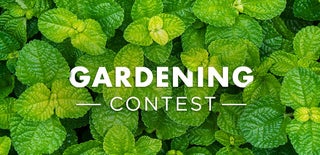Introduction: Custom Plant Markers Using TinkerCAD
TinkerCAD is a great tool to create 3D models in a simple and intuitive way. In this Instructable, I will show you how to design and 3D print custom plant markers for any garden, no matter what plants are growing! I'll show you how to customize the text and the photo of the plant type shown on the sign, even if it's your first time using TinkerCAD.
TinkerCAD is a FREE 3D modeling software that is completely online, simple to use, and great for kickstarting your 3D modeling hobby.
To create your free TinkercAD account you can use this link: https://accounts.autodesk.com/register?AuthKey=a9b...
Let's get modeling!
Step 1: Getting Started: the Main Cube
It all starts with a cube. We need to resize the cube. To do this, click on the cube, followed by the small white square on one of the bottom vertices. click on "20mm" and type in the proper dimensions. The length should be set to 45mm and the width 30mm. The Images above should help show the dimensions better.
Next, we need to set the height of the rectangle to 2.5mm. if you are somewhat familiar with the software, feel free to change the dimensions or shape. Make sure not to make anything to thin or hard to 3D print.
If you are happy with the shape of the rectangle now, you can go on to the next step. I wanted to cut off the corners of the rectangle. To do this, click on the rectangle and change the "radius" setting to 1.5, and the "steps" setting to 1. (see image 4)
Step 2: Modeling the Spike
Next, I will show how the spike part of the sign is modeled. The main shape used is also a cube. We can change the dimensions of the cube to better suit our needs. The dimensions I used are, 30mm X 2.5mm X 2.5mm.
(See image 1)
Click on the spike and drag it towards the center of the other rectangle. It doesn't have to be perfect, we will align these shapes later.
Step 3: Making the Point
To make the point of the spike, we will be using the wedge shape. we need to rotate the wedge in 90-degree increments until it is oriented like the picture above. Then, like the previous components, we need to add dimensions to the shape so it can better meet our needs. The dimensions are in the picture above.
(Length: 2.5mm
Width: 2.12mm
Height: 2.5mm)
After we have set dimensions for the shape, we can place it at the bottom of the long rectangle. Again, we will be aligning this better later so don't worry about it being perfect.
Step 4: Adding Custom Text
This part is really cool because you can customize this text to match whatever plant or crop you are making this sign for. To start, drag and drop the text "shape" from the shape gallery. In the box on the top right, type in the name of the plant. You can also choose the font here on the same menu. change the dimensions of the text to your desired length and width. In order to make it so the text protrudes a little from the sign base, change the height to 3mm. Place the text towards the middle of the base and lets start with the picture.
Step 5: Adding the Picture
Now its time to add an image. This part is one of my favorite features in TinkerCAD, you can upload an .SVG file and it will automatically make it into a 3D mesh. Let me show you how.
First, we need to find an image that fits the plant you are using. You need one that is Black and white ONLY and looks similar to the one I choose. Just make sure it is clipart or something, not an actual photo. Also, choose a more simple image so that it is easier to 3D print later on.
To find these images you can either draw them yourself (digitally) or search for one online.
I would recommend searching:
"Clipart [Plant name] Black and White"
Download the image once you found one.
From here we can drag them into Tinker CAD. Just go to "Import" and drag the image from your computer. I would also recommend putting the "Scale" to 25%, just so the object isn't too large when it is imported.
Once you have adjusted these settings, click "Import".
Lastly, you can adjust the image to the desired length and width. just keep the height at 3mm just like the text.
Step 6: Aligning, Grouping, and Exporting
We are almost done, we just need to line everything up, group all of our shapes together, and export our file for 3D printing.
Click on the "Align" button and then click on the circle that runs through the middle of all 5 shapes. (See Image 1)
Select all of the objects and click the group button on the top toolbar. (to looks like a square merged with a circle)
We have finished designing our model!
To export our model for 3D printing, click on the "export" button followed by the ".stl" button
Step 7: Printing and Finishing!
Once you download the .slt file, you can 3D print it! If you don't own a 3D Printer, don't worry! Many libraries have 3D printers that are open to using for the public.
Once printed, you can go over the image and text in a sharpie or paint marker. This just helps when reading it.
Now go get planting.
I hope you enjoyed this instructable!
If you have any questions, comment below and I will try to respond to all of them!
Bye!
:)

Judges Prize in the
Gardening Contest











